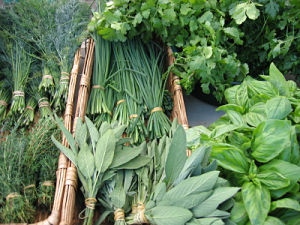No, we aren’t planting money trees, or even money plants.
What we ARE doing is looking at ways to earn some side income from small gardens.
 Barakah Heritage Farm hosts a fair number of visitors each year via our horse programs, the campsites and glamping loft and the goat experience. As the area in front of the main barn is just a big plain yard, we were looking for something to add some curb appeal and possibly trigger some impulse buys to add to the farm income. In previous seasons, guests have admired the vegetable garden, and we often gifted folks with some excess produce to take home. So we thought perhaps some type of garden product could dress up the yard and generate some income.
Barakah Heritage Farm hosts a fair number of visitors each year via our horse programs, the campsites and glamping loft and the goat experience. As the area in front of the main barn is just a big plain yard, we were looking for something to add some curb appeal and possibly trigger some impulse buys to add to the farm income. In previous seasons, guests have admired the vegetable garden, and we often gifted folks with some excess produce to take home. So we thought perhaps some type of garden product could dress up the yard and generate some income.
We looked at 3 main options: vegetables, flowers, and herbs. The first step was to do online research and find out which of these are most popular in farm markets and roadside stands and grocery stores. Here are 3 favorite resources:
Ten Most Profitable Herbs To Grow
Ten Most Profitable Cut Flowers For Small Growers
Our Farmer’s Market Best Sellers
Generally, our criteria were: inexpensive to plant, annuals or easily-transplanted perennials (all our business models are designed to be portable), minimal care to thrive, tolerate our climate, be visually appealing, and mesh with our mission of heirloom plants. Beyond that, the plant had to be well-ranked for popularity with a good history of selling at farm markets. Finally, they had to be plants that would be popular with our demographic (hikers/campers, horsewomen, animal lovers).
Here is our list, by category:
Herbs: basil, chives, cilantro, parsley, catnip (many folks have pet cats), sage, dill.
Edible flowers: viola, nasturtium, calendula
Cut flowers: zinnia, astor, clary sage, sunflower, carnation, delphinium, heather, baby’s breath
Vegetables: tomatoes, cucumber, possible swiss chard and/or kale
We will narrow this down further closer to planting time. In general, we will choose heirloom varieties that are unusual and colorful, such as purple tomatoes and lemon cucumbers.
We have started the garden beds, one pictured here and another around the side of the barn.


 Below are some additional links we found useful:
Below are some additional links we found useful: